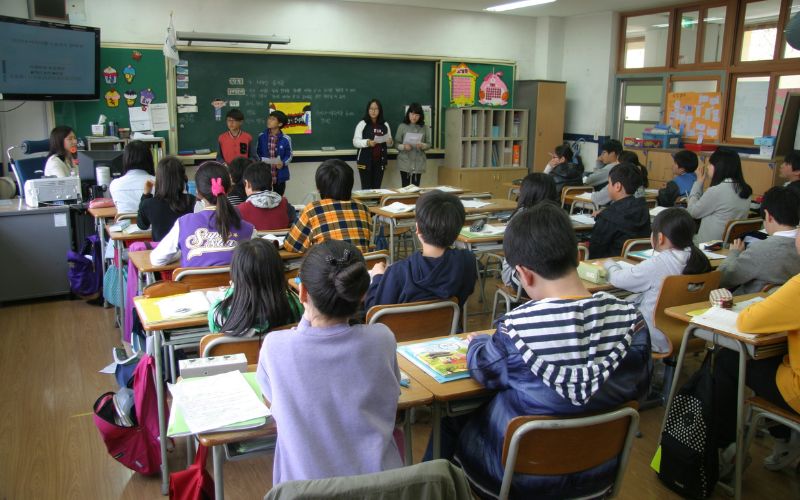
- Details
- By Kaili Berg
Native American students continue to face alarmingly high rates of chronic absenteeism, a trend exacerbated by the COVID-19 pandemic, the Associated Press reported last week.
This issue has become particularly prominent in California, where nearly 60% of Native students missed at least 10% of the 2022-2023 school year, exceeding the state average of 30%.
For many Native students, the barriers to consistent attendance are rooted in a combination of systemic inequities, historical trauma, and unique challenges tied to cultural and geographic factors.
Even before the pandemic, Native students were disproportionately affected by chronic absenteeism. The transition to remote learning, school closures, and the disruption of community-based support systems during the pandemic significantly worsened the problem.
Many Native students live in rural areas or on reservations, where unreliable internet access, transportation challenges, and limited educational infrastructure tie in with existing disparities.
Geographic isolation often makes it difficult for students to get to school consistently, and in some cases, families must prioritize immediate needs over regular attendance.
Economic hardship is another critical factor. Native communities experience higher poverty rates than the national average, leaving families to navigate complex decisions about where to allocate limited resources.
Children may need to stay home to care for younger siblings or work to contribute to household income. These economic pressures often intersect with health disparities, as Native communities are more likely to experience chronic illnesses and limited access to healthcare.
The historical legacy of forced assimilation through boarding schools and the systemic erasure of Native cultures from public education also plays a role. Many Native students feel alienated in schools that fail to reflect their cultural identities or histories, a challenge highlighted by a report from the National Indian Education Association.
This disconnect can create a sense of disengagement, making school attendance feel less meaningful or rewarding. Schools often lack representation of Native teachers, administrators, or culturally relevant curriculum, which further distances Native students from their educational experiences.
According to a report from the National Indian Education Association, while Native American students constitute about 1% of the public school population, only 0.5% of teachers are Native American, and in schools where Native students are the majority, just 29% of teachers are Native, with 61% being white.
Some communities and organizations are making strides to address these barriers. Programs that integrate Native languages, traditions, and histories into school curricula have shown promise in creating a sense of belonging for Native students.
Tribal partnerships with local schools are helping to build trust and create learning environments that celebrate Native culture. In Watonga, Oklahoma, the school system collaborates with Cheyenne and Arapaho programs to reduce absenteeism among Native students. These initiatives provide financial assistance for school expenses and organize conferences for tribal youth, fostering a supportive and culturally relevant educational atmosphere.
Some schools have introduced flexible learning models, including remote and hybrid options, to accommodate students in rural areas or those with family responsibilities. These efforts, however, require significant investment in infrastructure, including reliable internet access and technological support.
Engaging families and communities has also emerged as a critical strategy. Initiatives like home visits, community liaisons, and culturally relevant events at schools can strengthen the relationship between families and educators.
Some schools have even begun to offer food pantries, clothing drives, and health services to ensure students have the resources necessary to attend school. Providing transportation and improving access to clean water and adequate housing can also help alleviate some of the systemic challenges faced by Native families, as noted in reports highlighting the lack of basic infrastructure on many reservations.
More Stories Like This
Ojibwe Scholar Anton Treuer to Speak at GVSU for Native American Heritage MonthYazzie/Martinez Draft Plan Angers New Mexico Indigenous Education Experts and Advocates
Morongo Breaks Ground on New Tribal Elementary School
"Power in Culture" Study Reveals Key Drivers of Belonging for Indigenous College Students
Native American All-American Football Game Returns to Vikings Stadium, Adds Girls' Flag Football Clinic
Help us tell the stories that could save Native languages and food traditions
At a critical moment for Indian Country, Native News Online is embarking on our most ambitious reporting project yet: "Cultivating Culture," a three-year investigation into two forces shaping Native community survival—food sovereignty and language revitalization.
The devastating impact of COVID-19 accelerated the loss of Native elders and with them, irreplaceable cultural knowledge. Yet across tribal communities, innovative leaders are fighting back, reclaiming traditional food systems and breathing new life into Native languages. These aren't just cultural preservation efforts—they're powerful pathways to community health, healing, and resilience.
Our dedicated reporting team will spend three years documenting these stories through on-the-ground reporting in 18 tribal communities, producing over 200 in-depth stories, 18 podcast episodes, and multimedia content that amplifies Indigenous voices. We'll show policymakers, funders, and allies how cultural restoration directly impacts physical and mental wellness while celebrating successful models of sovereignty and self-determination.
This isn't corporate media parachuting into Indian Country for a quick story. This is sustained, relationship-based journalism by Native reporters who understand these communities. It's "Warrior Journalism"—fearless reporting that serves the 5.5 million readers who depend on us for news that mainstream media often ignores.
We need your help right now. While we've secured partial funding, we're still $450,000 short of our three-year budget. Our immediate goal is $25,000 this month to keep this critical work moving forward—funding reporter salaries, travel to remote communities, photography, and the deep reporting these stories deserve.
Every dollar directly supports Indigenous journalists telling Indigenous stories. Whether it's $5 or $50, your contribution ensures these vital narratives of resilience, innovation, and hope don't disappear into silence.
 The stakes couldn't be higher. Native languages are being lost at an alarming rate. Food insecurity plagues many tribal communities. But solutions are emerging, and these stories need to be told.
The stakes couldn't be higher. Native languages are being lost at an alarming rate. Food insecurity plagues many tribal communities. But solutions are emerging, and these stories need to be told.
Support independent Native journalism. Fund the stories that matter.
Levi Rickert (Potawatomi), Editor & Publisher

